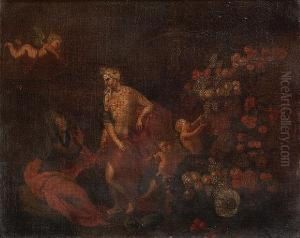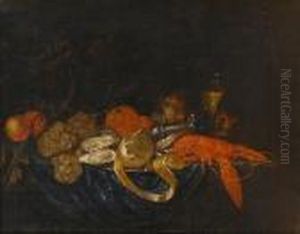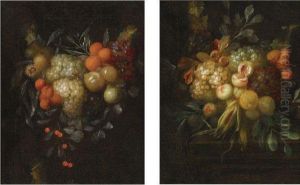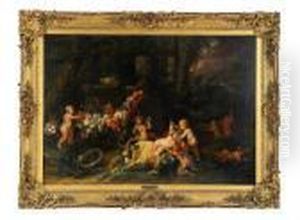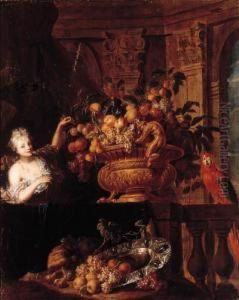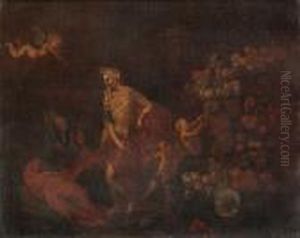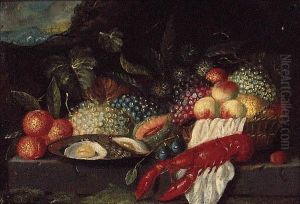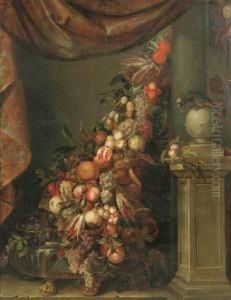Jan Pauwel Ii Gillemans Paintings
Jan Pauwel II Gillemans was a Flemish painter known for his still life works and contribution to the genre in the late 17th century. Born in Antwerp, Belgium in 1651, he was part of a family of artists, with his father Jan Pauwel Gillemans the Elder also being a notable still life painter. Although not as famous as his father, Gillemans II developed his own style and gained recognition for his detailed and vibrant compositions.
Gillemans II trained under his father, absorbing the family tradition of painting, and he became a master in the Antwerp Guild of St. Luke in 1675. His works are characterized by rich colors, precise detail, and the inclusion of various objects such as fruits, flowers, and sometimes animals, which were typical of the Baroque period's still life genre.
Throughout his career, Jan Pauwel II Gillemans remained active in Antwerp, where he created most of his works. Little is known about his patrons or the extent of his fame during his lifetime, but his paintings have been appreciated for their craftsmanship and decorative quality. His compositions often conveyed a sense of abundance and the transience of material pleasures, reflecting the vanitas theme common in still life paintings of that era.
Gillemans II died in Antwerp in 1704, leaving behind a body of work that would continue to be studied and appreciated by art historians and enthusiasts. His paintings are part of various museum collections across Europe, and they contribute to our understanding of the still life genre and its evolution during the Baroque period.





